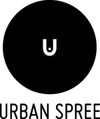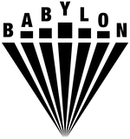In 2014, CYBERFEST «The Other Home (s)» explores the commonalities and differentiations among physical, emotional and cultural manifestations attached to the concept of «home».
| __________________________________________________________________ |
CYLAND presents
CYLAND & CYBERFEST 2014: THE OTHER HOME
November — December 2014
St Petersburg, Moscow, Tokyo, Berlin, New York City
— 2014 CYBERFEST CURATORIAL STATEMENTS —
| __________________________________________________________________ |
 Anna Frants, Festival curator:
Anna Frants, Festival curator:
«'THE OTHER HOME'... Next to another home, next to another structure — much like the house that Jack built — we turn together with Planet Earth. We revolve around the Sun which in its rotations, formats people going to sleep around darkness and rising with light of day break to start playing musical instruments, sweeping floors, brushing teeth or just lying back down to think about life.
What a pleasure it is sometimes to ponder life - to stay in bed and consider how particles of chaos form harmony! Such clarity happens on its own without outside help in an inconceivably infinite number of ways. What if we aim a magnifying glass at this to explore it with our eyes? What would we see? A home, another home; yet another... In Moscow, Tokyo, St. Petersburg, Berlin, New York...
A friend once told me as a child he asked to be woken up an hour early so that he would loll in bed and practice reflection. As a curator, I would like for the time spent at CYBERFEST, regardless of the geographic location, to become in fact — that very hour when one would immerse as Fluxus founder George Maciunas stated into 'a Fusion of Spike Jones, vaudeville, gags, children’s games and Duchamp' while simultaneously responding to Earth as it slowly rotates on its axis, exposing alternate side to sunrays...»
— A. Frants, 2014
 Marina Koldobskaya, Festival curator:
Marina Koldobskaya, Festival curator:
«'Home Sweet Home'... Parents’ house... My castle and the walls that help.
A modern person changes residences 5 to 10 times during a lifetime, usually using a few simultaneously — often in different countries and climate zones.
Countless numbers of renovations wipe away traces of history, remote or recent, one’s own as indiscriminately as somebody else’s.
The residence is a mirror of the inhabitant’s soul but successful people invite the architect / designer / decorator to arrange the interior for them. In vogue, this could be exotics, high-tech, historicism or vintage – all made to order; purchased in special places.
'Home Sweet Home' is a bunch of appliances that chop / whip / fry / steam / warm up / cool down. Tools perhaps designed in Europe while made in Asia help prepare food familiar to us since childhood as proficiently as exotics, fusion or dishes of the molecular gastronomy.
Bedrooms are still often upheld sacrosanct — believed to be the place where people most intimately love, conceive, give birth and die. This is a literary cliche. People love and conceive in all sorts of places. A scenario: on a romantic trip purchased in a travel agency. They give birth at a hospital. They die… Well, let’s leave it at that.
The walls look like a castle less and less and more look like a screen. In order for the setting to help, it is recommended to switch channels. But as a rule, what does this help?
An international person lives in the coordinates: taxi-airport-hotel. They are all different and they are all somebody else’s property. At success, most envy “one’s own” yacht or plane. It seems, modest land has no hold anymore.
A person with means today could buy a castle in Europe or an island in the Pacific Ocean — purchasing history or voiding history.
Between poles of success there are tens of thousands square miles of bedroom communities. Something needs to be done about that.»
— M. Koldobskaya, 2014
 Viktoria Ilyushkina, Video Art Program Curator:
Viktoria Ilyushkina, Video Art Program Curator:
«With each industrial, cultural or societal revolution — the fundamental contexts defining „home“ transform. „Home“ has shifted from a comfortable cave to heights of architecture and technical advance.
In contemporary times, the physical location of where one is tethered to is less restrictive. A person may travel freely, with amazing speed and have all ties to their home needed on a laptop or smart phone – a small digital extension of the physical world.
Regardless of the growing freedom to travel afar, most have a „home“ — each different from their neighbors. „Home“ can be a haven, a border of elements, a burrow; at best — it is the body and the projection of its inhabitant’s mind.A place of solitude and privacy, able to be changed or erased to start again elsewhere anew.
Reversely, the technology which provides the luxury of freedom also allows permanence of mundane communications and anonymity change the mindset of one's actions. It is often impossible to delete what lives online. Meanwhile, this new lifeline/timeline accrues as it also becomes less possible to distinguish what is real and what is an illusion. In any case, the real and fake is inside our homes now, virtualizing our reality.»
— V. Ilyushkina, 2014
 Sergey Komarov, Sound Art Program Curator:
Sergey Komarov, Sound Art Program Curator:
This year, Cyberfest reexamines the notion of «home» and explores the very boundaries of the concept; therefore, it is necessary, when speaking the language of digital disciplines, to determine the point of origin of the term itself. The word cybernetics is derived from Greek word kyverni̱tikí̱, which can be translated directly as "the art of government.” In this vein, a sound artist could be viewed as a computer programmer who, to the extent of his experience and luck, imbues our bodies and souls with an algorithm for modulation of emotions.
The algorithm could be straightforward and strike an instant chord, or complex, branched; perhaps, the chord might even hide its true calling as an audio Trojan Horse.
Whatever that algorithm might be, it always has its first «line» or even its own microscopic space before it. The Other Home Sound Program explores this atypical performance space—the few spare seconds before the sound is born and a millisecond after that. It is into this time-space, where one artist has already experienced the culmination of his own future opus in a total silence and another is taking his first timid steps towards the oncoming sound, that mental instructions to the listener and to oneself are emitted.
The aural world is being rebooted. And, of course, artists themselves will become objects of the study.
To explore push the boundaries of home through sound, Cyberfest 2014 presents 5 acclaimed artists who practice totally dissimilar approaches to sound art: Jonas Gruska, Boris Hegenbart, Alexander Zaitsev, Pete Um, and Georgy Bagdasarov— the improvisor, the engineer, the teacher, the ascetic, and the showman, respectively.
—S. Komarov, 2014


















